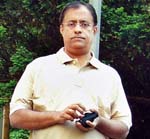Q. How do you view leadership styles across countries?
A. Historically, the typical leadership styles have been to inspire a shared vision, bring in collaboration, promote empowerment and align well to local culture. Some of the key aspects of leadership styles have been communication, creativity, integrity, trust, vision and strategy, which is common across multiple countries. Studies have also indicated that leadership styles have evolved over successful local environment. Local culture is also a key element to this. Other key aspects to leadership styles link to people-oriented and task-oriented models. History of the country and the value system also drive the leadership model.
Q. What are your thoughts on Indian leaders and their style?
A. Leadership in India has evolved aligned to the characteristics of Indian society. Indian culture is ancient but evolving. There is a good amount of diversity in the society and culture. Indian leaders are more situation leaders. They are blended well to manage multiple situations be it customers, people or peers. Their awareness of finance, process and people issues is an added advantage. They bring in a mix of good attributes, abilities and behaviour.
The uniqueness lies in high tolerance to ambiguity, adaptability to changing environment and ability to manage diversity. The pattern is more relationship, emotions and efforts oriented with a blend of good knowledge, respect to value system and empathy.
Q. What type of leadership do you personally suggest keeping the Indian workforce in mind?
A. I would recommend situational leadership. Keeping the core competence, adaptability to the situation is critical to the Indian context. India is dynamic from people and business situations so one model would not work always. Hence, someone who can adapt well will be more successful.
Q. Please share one best or worst leadership experience that you have had in the industry.
A. There have been many instances of good and bad leadership that I have come across. One instance is about an organisation which grew 200 per cent in profits over a period of three years (share price went up 600 per cent) and the same was destroyed one year later with the change of leadership. The leader who built it was charismatic, understood the need of the customer. He blended this with the people aspirations and turned the tide. Visionary skills were exemplary and one key attribute was to get the people aligned to the vision of the organisation.

The person who turned this the other way was flamboyant, added management layer who could not drive and invested in the wrong areas, which just destroyed the whole framework.
Q. What are the major expectations of Indian employees from their leaders? Are the Indian leaders serious enough to stay abreast of these expectations?
A. Employees expect someone to handhold them and lead from the front. They expect transparency and empowerment from their leaders. Understanding of the business, customer and people is the key. They look upon their leaders to be consistent and have a blend of national and international flavour. Being emphatic is critical too. Over the years there has been a tremendous change in leadership in India. With the emergence of new age industries and maturity of the traditional businesses in India, leaders have also gone through transformation in this process. They have been able to align to the tremendous growth seen in some of the new age organisations. Scale management, alignment to international standards, changing customer expectations have all made them stronger in their thinking.
Q. What are the concern areas when the local workforce, say in India, is led by a foreigner?
A. The key issue is the cultural alignment. Though many international leaders are getting blended to work in Asian markets, specially India, yet their understanding of culture, emotions and values of the Indian system is still a challenge. Having said that, there have been tremendous efforts from the Indian workforce to get the international leaders aligned to the Indian environment.
Q. How have you seen Indian leaders evolving over the years?
A. Although India’s competitive environment is relatively new, leaders have brought in a sense of commitment to social goals fueled by passion and enlightened self-interest.
Access to quality information, opportunities to get educated in international business schools, exposure to leading global leaders and thinkers, working in the international environment and aligning to the matured workforce of India have contributed a lot in evolving the Indian leadership. The good blend of international yet local approach has made them think and apply themselves differently. They work to create a sense of social mission aligned to business success. They make aggressive investments in employee development, despite tight labour markets and widespread job hopping. They strive for a high level of employee engagement and openness. The Indian Gen Y has also contributed a lot to this maturity and there is a natural push on the leadership to align to the new age requirements. I would also say that India’s leadership as a country in the global economy is also a key contributing factor. The confidence of this country to march ahead despite challenges has also contributed to evolving and maturing of the leadership talent
























